The shrub stands tall above the snow with yellow blooms that herald spring’s arrival. No, not forsythia, but witch hazel ‘Arnold’s Promise’ (Hamamelis x intermedia ‘Arnold’s Promise’, below), with fragrant, ribbon-like flowers unfurling in late February’s frigid temperatures. I have a poor nose for such things, but walking through the garden on a late winter’s day, the scent is striking, and the blooms are unusual and treasured when few other plants have such a delightful display mid February into March.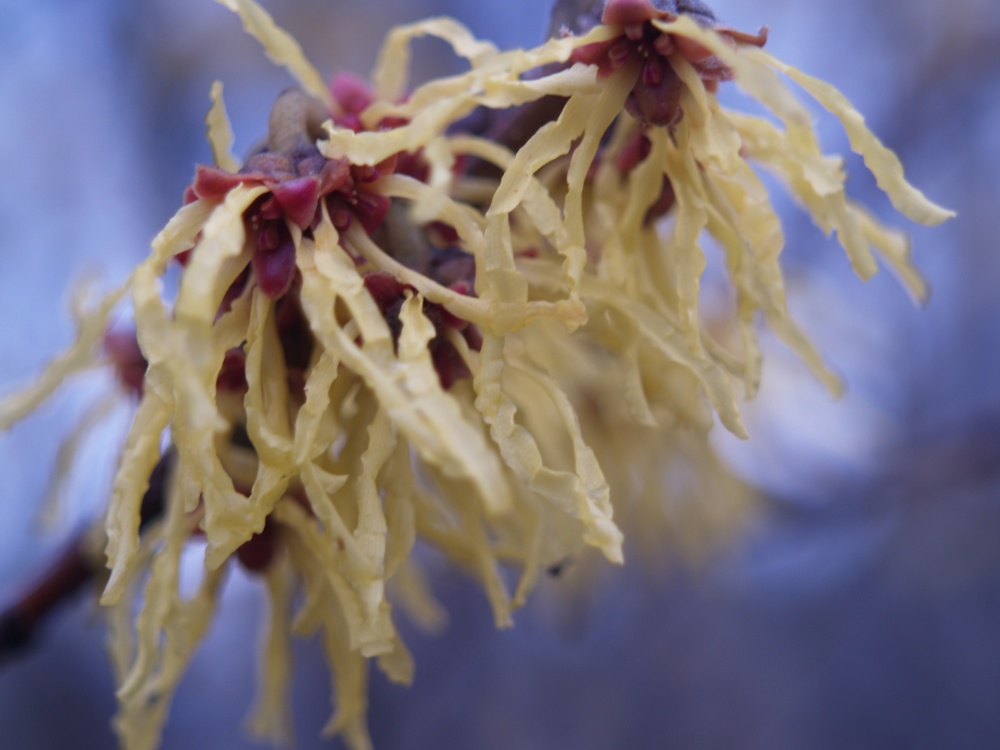
I have no quarrel with forsythia (below), though their masses of bright yellow flowers are seemingly found on every street corner and along every fence row in mid March. For my garden the shrub is too large and a bit unruly, requiring regular pruning to keep within reasonable boundaries.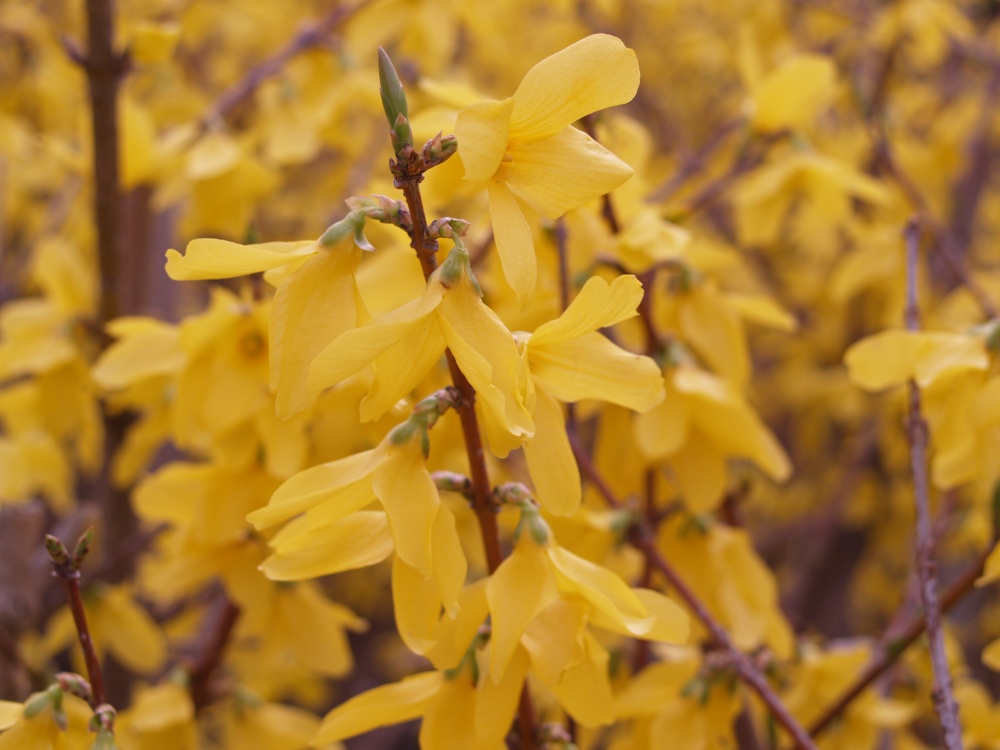
Far more mannered, and blooming a few days earlier, is Paper bush, though I’ve not heard anyone use any but it’s botanical name, edgeworthia (Edgeworthia chrysantha, below). The rounded clusters of yellow-tipped white tubular flowers are obvious as buds in December, and steadily increase in size until opening into colorful blooms in early March. I was reluctant to plant edgeworthia, fearing catalogs and references describing questionable cold hardiness, but my experience through several winters has allayed these concerns. While I was first awestruck by the marvelous blooms, the foliage is often described as dull, but I’ve found the large, flat blue-green leaves to be pleasant enough and better than many.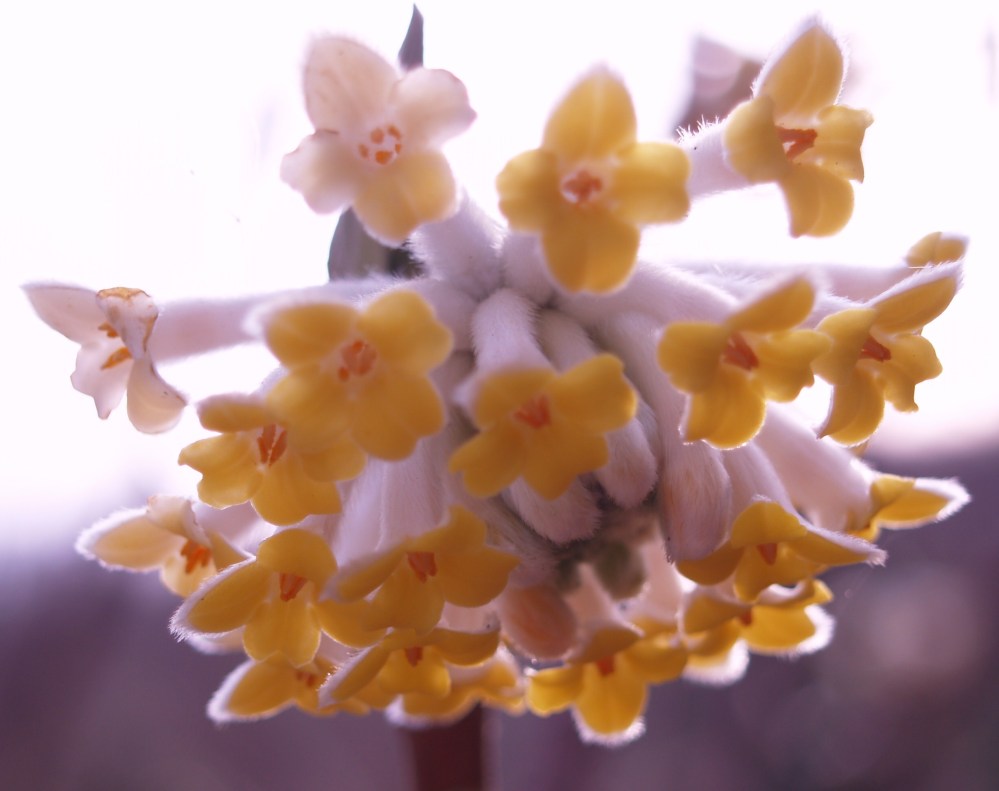
I have described in the past that I consider pussy willows (below) appropriate only for the out-of-the-way back corner of the property, and I suppose if I’m averse to forsythia then the same should hold true for pussy willow, for they are coarse and ill-mannered. Even with variegated foliage, the one in my garden is worthy only for the smooth gray catkins in late winter. I would consider it unwise to allow pussy willow to consume any amount of prime garden space, but mine is planted at the edge of a poorly drained, nearly swampy area where little else would survive, so the attractive catkins have earned their place in the overly soggy garden, nowhere else.
I have met a fine fellow from Lancaster, Pennsylvania in years past who made quite a sum selling cuttings of pussy willow at late winter garden shows, selling a few sprigs for ten dollars a bunch, and if this is your plan I congratulate you on your business sense, for this farmer had to haul his cash with a wheelbarrow, but you will not have much of a garden to look at for most of the year.
Far more attractive, in shiny evergreen foliage and flower are the spring blooming camellias (Camellia japonica, above). I prefer the fall blooming hybrids and sasanquas, for they bloom in early winter when little else is flowering, but the spring varieties bloom early, and the flowers are marvelous. Deer stripped the leaves and flower buds of mine almost completely for several years, and I had nearly given up and pulled them out, before discovering that a winter formulation of deer repellent would protect the plants, even in an extreme winter with snow cover such as the one we’re recovering from. The minimal effort and expense to spray the repellents is trivial since it allows such splendid plants to grow carefree in your garden.
Andromeda, or pieris, is never so carefree, for it is favored by lacebugs, and must be sited in a well drained, but not too dry location. The pendulous lily-of-the-valley type blooms (above and below) and red or pink new foliage on many varieties determine that is worth a bit of trouble. The evergreen foliage is not bothered by deer, but you might have to experiment a bit to find a preferred location. If successful the dividends will reward your persistence.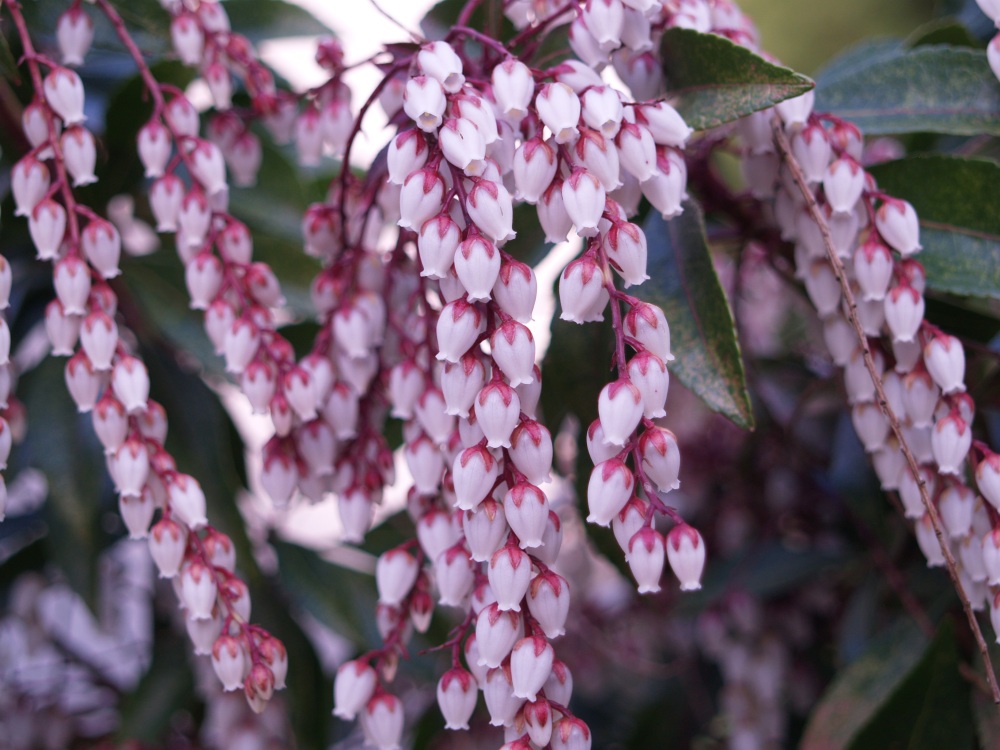
Also requiring some patience is the slow growing ground cover sarcococca (Sarcococca humilis, below), a knee high, spreading evergreen shrub with lustrous dark green foliage and tiny ribbons of fragrant flowers hidden beneath the leaves in late winter. The flowers are not showy, and are difficult to see, but they are quite fragrant for those with their sense of smell intact (not for me), and the shrub is sturdy, attractive, and carefree. From a small plant you will wait several years for it to develop into a satisfactory small shrub, but then you will be happy for the wait.
Much faster growing is the grape holly (Mahonia beali, below), which also has an early winter blooming cousin, Mahonia ‘Winter Sun’. The leaves of both are holly-like, but with attention getting spines, and the drooping racemes of yellow flowers develop into small grape-like fruits. 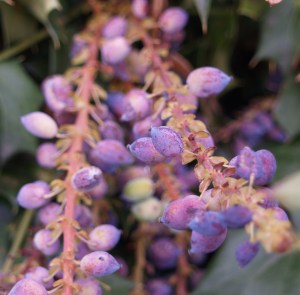 Until the deep snows arrived I paid particular attention to Winter Sun to see the fruits in January, for I have only seen the small purple, edible fruits on plants in the nursery, but birds must have plucked them before I saw them. Still, Winter Sun mahonia is one of my favorites for its bright yellow blooms in November, lasting well into late December and even into January.
Until the deep snows arrived I paid particular attention to Winter Sun to see the fruits in January, for I have only seen the small purple, edible fruits on plants in the nursery, but birds must have plucked them before I saw them. Still, Winter Sun mahonia is one of my favorites for its bright yellow blooms in November, lasting well into late December and even into January.
The similar blooms of Mahonia beali begin to show color in early March, and persist for a month or more, then are followed by grape-like berries. With more abundant food sources in the spring these berries are not so quickly consumed, so this is one of the best of the flowering shrubs for the garden in March, and then well into April. It’s form is a little irregular, much more so than Winter Sun, but the evergreen leaves make an attractive shrub throughout the year. I have found that Beali seeds itself about, but the seedlings are easily controlled, they do not crowd out other plants so as to be considered invasive, and I like free plants, so there are few that I enjoy more.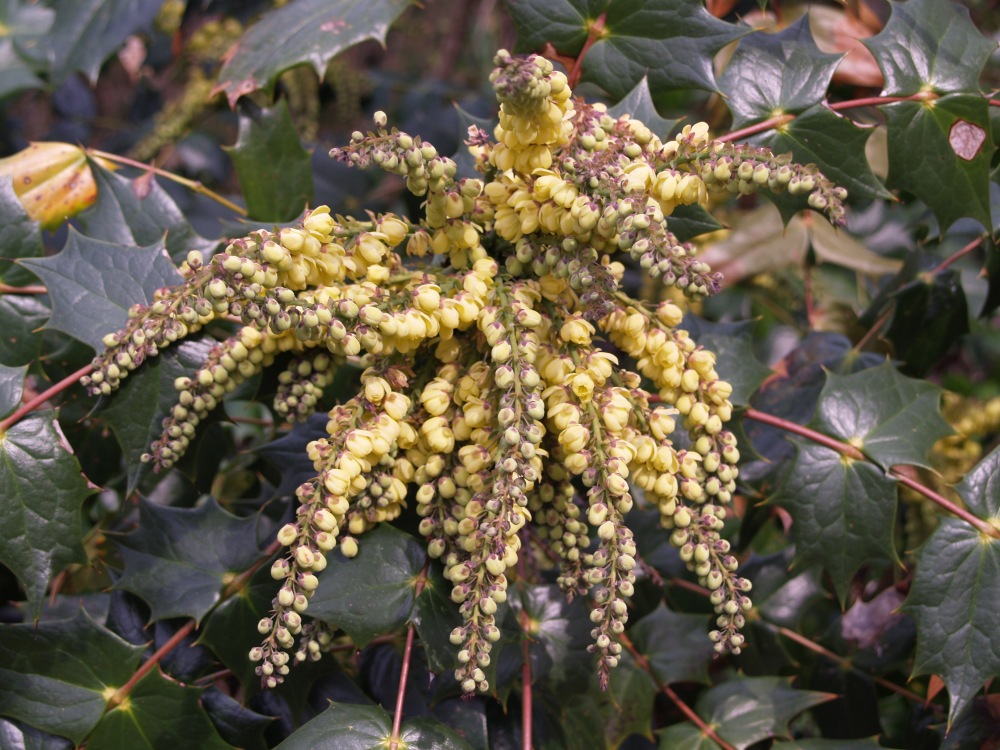
A second ground cover, though this one deciduous, Winter jasmine (Jasminum nudiflorum, below) has branches that cascade over boulders that edge one of the ponds in the garden. In mulch or soil the branches will root where they touch, but of course not on the stone. Winter jasmine grows quickly and must be pruned back a time or two through the year. It will bloom in an extended warm spell in mid winter, but I don’t believe that I’ve ever seen more than a flower or two earlier than late February in my garden. 
After the long winter, these shrubs are highlights of the early spring garden, and outstanding plants for the remainder of the year. Next, and I promise this will be a few days only, we will feature the flowering trees of March. I hope you will join me again.
I had a plant that bloom pink looking waxy grapes, no flowers in the fall. I live in New Orleans and had purchased this a few years ago. No one seems to know what I am talking about. Would you happen to know what I am talking about and if so, please send me a picture. I should have saved one of the leaves before I threw it out because it died during the long freeze we had in New Orleans, I covered it but it didn’t do any good, the freeze killed it.
Hope to hear from you.
Thanks,
Regina
I’m sorry Regina, I haven’t a clue. I can identify most plants first hand, but I don’t know if I’ve ever gotten one right from a description.